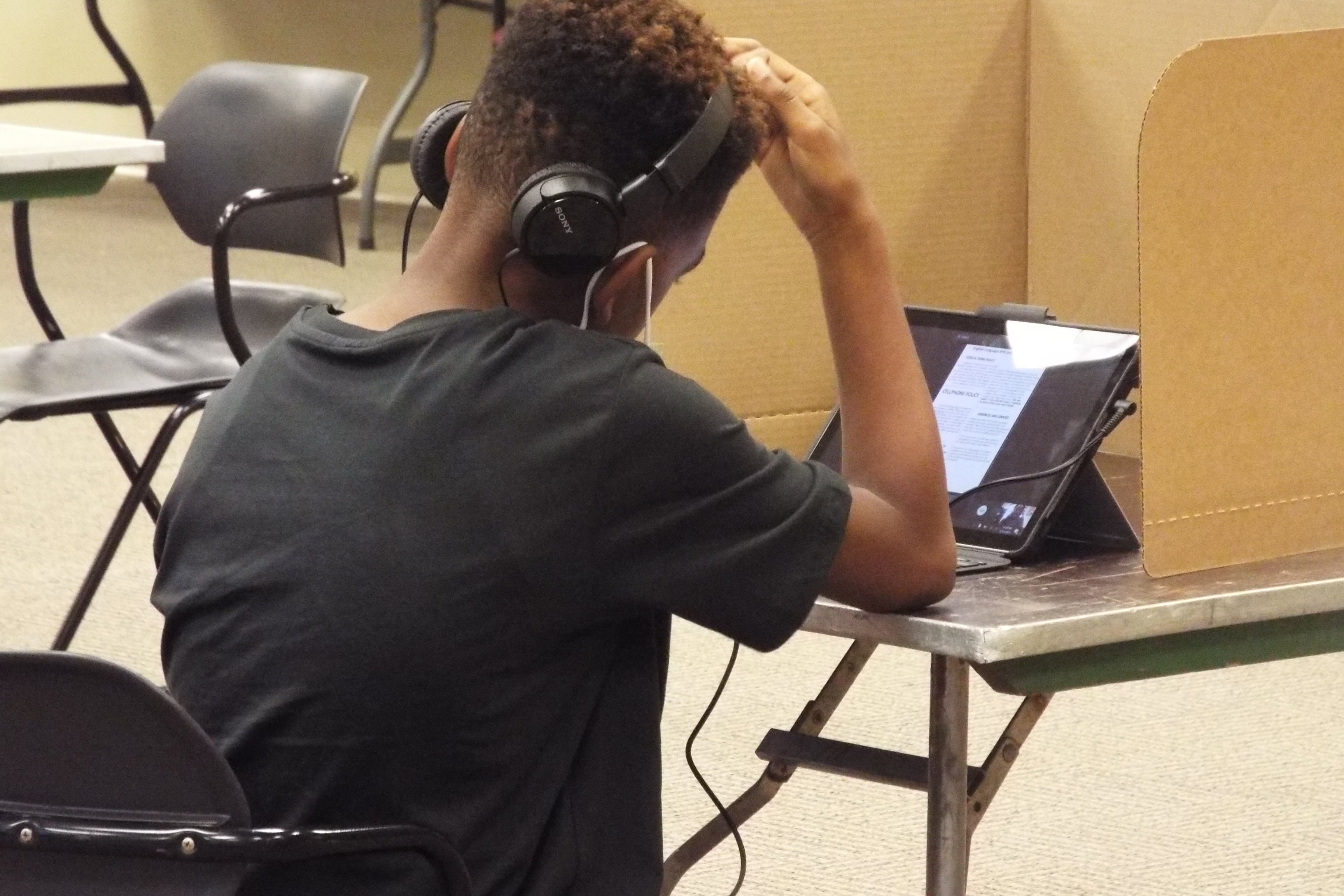Sign up for Chalkbeat New York’s free daily newsletter to keep up with NYC’s public schools.
To reduce New York City’s class sizes under a new state mandate, Education Department officials floated one option to help principals comply: virtual learning.
In a plan released this week outlining ways that schools could meet the law’s goals, the Education Department suggested that some students could “receive regular remote instruction, potentially reducing the overall impacts on space in schools.”
Spinning up a virtual learning program would be optional, and the plan does not force principals to choose any specific method for achieving the new caps. It suggests 11 other possible ways principals could free up space, including repurposing rooms not currently used for instruction; boosting the number of classes taught by assistant principals; running student schedules with staggered start times; and ensuring students are spread evenly across classrooms.
Virtual learning could be valuable on campuses that are tight on space as officials scramble to find ways to reduce class sizes, including lengthy and expensive construction projects or capping school enrollment.
Many schools and families struggled with virtual learning amid the chaos of citywide building shutdowns during the pandemic, but city and union officials are betting that more targeted applications can bear fruit. The Education Department now runs two remote schools, and saw success with a remote learning pilot, offering online classes to students who couldn’t take those courses at their schools. And the most recent teachers union contract has expanded schools’ ability to offer virtual learning.
The class size reduction plan is preliminary and subject to approval by the unions representing teachers and school administrators. And it’s unlikely that the state’s class size mandate will directly lead to a big increase in virtual learning in the short term, since only 40% of the city’s classrooms must comply with the new class size caps this September.
“We’re very confident we are going to be in compliance next year,” First Deputy Chancellor Dan Weisberg said during a meeting of the Chancellor’s Parent Advisory Council on Thursday.
Under the law, classes must not exceed between 20 and 25 students depending on the grade level, and they also apply to virtual classrooms. Physical education and other classes involving performing groups are limited to 40 students. The law phases in over time, with 20% of classrooms per year required to comply with the new caps. All classrooms must be within those limits by 2028.
The city appears to be on track to meet the state’s requirements, and officials are requiring that all district superintendents increase the percentage of classrooms that are in compliance with the new caps by 3% next year.
“We are looking to make progress in implementing this law across the city, even as we are close to compliance for next year,” wrote Education Department spokesperson Jenna Lyle. “This includes putting $180 million in new funding into school budgets.”
Few schools signed up to offer virtual learning this year
United Federation of Teachers President Michael Mulgrew, who has pushed for class size reductions, has said that virtual options could help with space problems.
“You have less of a problem with programming your regular school day because you have less students in the building at any given time,” Mulgrew told Chalkbeat earlier this year. “It also gives you more classroom space to work with.”
The city’s virtual pilot program, allowing students to take classes from teachers on other campuses, was a boon for small schools that may have struggled to offer a full range of electives and advanced placement classes.
Under the expanded version of the program negotiated last year in the union contract, schools can offer classes during the regular school day or on evenings and weekends, allowing students to catch up on credits, pursue accelerated coursework, or go to school on a non-traditional schedule if they are working or have other responsibilities.
The contract said that 25% of high schools and 6-12 schools were eligible to offer virtual schooling this year, with all schools able to participate by the 2027-28 school year. Schools were required to sign up and neither students nor educators can be required to participate in virtual classes.
But a bureaucratic approval process created obstacles for schools to participate, according to union officials. Only 40 high schools are participating this year, though Education Department officials said 80 schools are approved for this fall with additional campuses still under consideration. (This does not include schools that allow students to attend virtual classes offered by teachers at other campuses.)
“Myself and the chancellor are more hands on now,” Mulgrew said, noting that middle and high schools are eligible to participate next year. “We both are frustrated with it.”
Walking back plan to force principals to prioritize teacher hiring
City officials also indicated that, at least for now, they will not require school leaders with vacant roles to prioritize hiring teachers over other positions — a move officials previously floated that would have constrained principals’ freedom to manage their own hiring decisions.
“We’re not eager to restrict principals’ and communities’ ability to hire who they think is most critical until we need to,” Emma Vadehra, the Education Department’s chief operating officer, said during the Thursday parent council meeting.
Some advocates have expressed worry that the city, which pushed back against the class size mandate, will not ultimately comply with the state’s requirements.
“Any plan worth the paper it is printed on must project how many classes will be reduced each year, using which levers, and with what results,” Leonie Haimson, executive director of the advocacy group Class Size Matters, said in a statement. “This document fails on every account.”
Michael Elsen-Rooney contributed reporting.
Alex Zimmerman is a reporter for Chalkbeat New York, covering NYC public schools. Contact Alex at azimmerman@chalkbeat.org.






